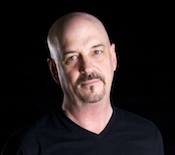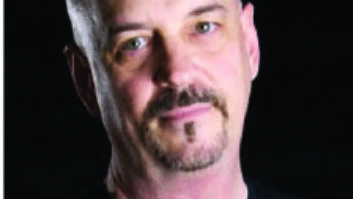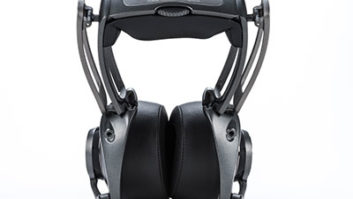
I’m always looking for something to do. Call it OCD, OMG, WTF or whatever you’d like—one of my dearest friends calls me her “favorite overachiever.” But over time, I’ve learned that sometimes the best move to make is no move: do nothing. One early lesson in the art of “let it be” came when I was assisting on a Ray Charles session. Ray was doing a redux of “What’d I Say” for a Suntory Vodka commercial for the Japanese market. Apart from the engineer, producer Jerry Hey and myself, the room held Ray, his manager and a committee of Japanese Suntory execs. I had set up a C12 and a piano bench in the live room because Ray liked to record vocals that way, either sitting at the piano while playing or on a piano bench with the mic set up in front of him. Once the formalities and greetings were out of the way, he was seated on the bench and started to be Ray, rocking side to side while singing to the pre-record that Jerry had excellently produced. The left to right arc put him wildly off axis from the mic’s sweet spot, which was set to the widest cardioid possible. There was a bit of a panic from the execs who saw this as a problem, but Jerry wisely decided to do nothing, Ray worked the mic as only he knew how, and it was awesome.
I’m so tuned in to doing nothing, I’ll look for it when I’m working with others. On a recent session, one of the musicians was the weak link in the band. It was a young player who was dropped into a session with some seasoned vets, and his time was skittish. Although the producer and engineer commented on it in the control room when the talkback button was up, they didn’t say a thing to anyone else. Over the course of the session, the player got over his jitters and at the end was relaxed and playing confidently. By taking no action, like making a call or creating a bad vibe, the producer got exactly what he wanted: killer live tracks from a great-sounding band.
I teach “do nothing” all the time. Knowing that a newbie’s biggest mistake is to aimlessly start tweaking EQ and compression without having an intention, I tell students their first step is to think first, then act. Every day when we’re cutting tracks in studio, before anyone touches an EQ, I ask them what they hear. Kick drum too boxy? No “point”? Week low end? Each one of those calls for a different solution. And so it goes for the rest of the track. Once you get this idea in your head—do nothing and only process the track once you know what you need/want —you’re golden.
I got to watch engineer Bernie Grundman do nothing a couple of times. He was mastering a project mixed by one of the top engineers in the business. It was my first time seeing what mastering was all about, and I was surprised at how hands-off Bernie was. He made minimal level and EQ adjustments and noted them for his assistant to carry out later. Of course I’m sure he would have to go deep on a project where the tracks didn’t sound so good, but that was the art: knowing when to do nothing. That’s the thing that puts him at the top of his craft.
Finding nothing to do can be a challenge and a test of your ability to delay gratification. On a recent session, I put a D112 inside a Yamaha kick drum and brought up the gain. It was ringy, boxy and awful. The solution was to pull the head, put a pillow inside, weight it down so it sat consistently against the beater head, and Bob’s your uncle. Once we’d tamed the beast, I reached for some sweetening EQ. The drummer loved the result and said she’d put a DW drum pillow permanently inside the drum. This means that next time we record her kit, I get to do nothing.
I learned my craft by assisting many great engineers who were experts at finding something that works, then running with it over and over. One engineer I assisted who’d mixed many hits had a stock setting for his vocal chain, no matter the vocalist. He would dial it into a GML 8200 EQ and an LA-2A from a piece of paper before he heard the track. For him it was a starting point that he’d sometimes tweak, but for the most part he didn’t touch it. It worked.
Engineer Mick Guzauski turned me on to the original Eventide SP2016 reverb, expertly designed by Tony Agnello and used by Mick on literally hundreds of records. When I worked with him, he used two of them. One for vocal verb (Stereo Room), and the other for toms and percussion (Room Reverb). Once I heard how this processor took a vocal and kit to higher levels than any other verb, I bought one and copped Mick’s settings. Stereo Room, F – R two positions back from maximum R, -3 at 250, -1 at 5k, stereo input with the vocal multed to both inputs. When I turn it on, I only adjust the decay time and pre-delay, which I set according to the song’s tempo. Other than that I do nothing, and it works every time.
So why do artists, engineers and producers use the same production teams, studios, consoles, DAWs, converters, mics and processors on project after project? Because if it’s working, do nothing and you’ll have a better chance at getting the results you want. Although being in control is how many of us are used to getting things done, including myself, sometimes doing nothing ends up giving you the control you seek.


